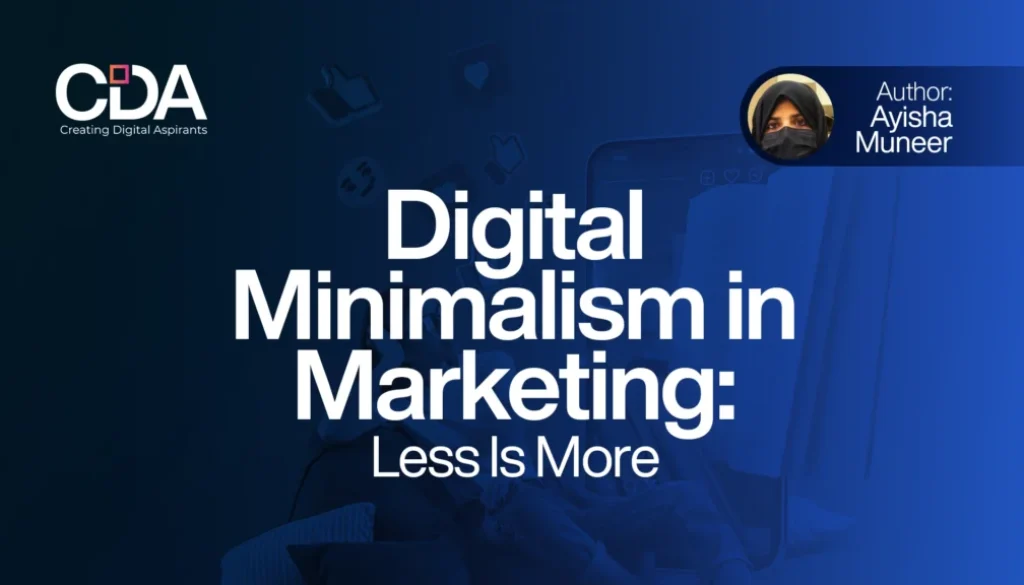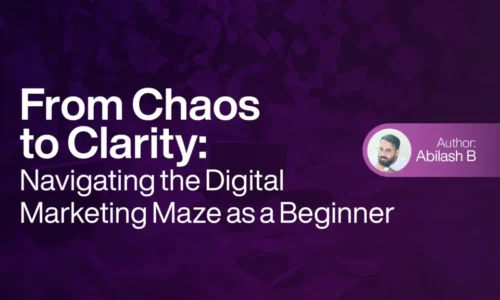Digital Minimalism in Marketing: Less Is More
In today’s world, digital minimalism is making wonders—not just in personal lives but in marketing too. With countless brands and messages flooding our screens, consumers feel confused and often move on.
Digital minimalism in marketing suggests a fresh, more focused approach where the topic becomes the key to capturing attention. By simplifying and focusing only on what truly matters, brands can form deeper connections, create more memorable experiences, and ultimately make their messages stand out.
This blog explores why digital minimalism in marketing works and how brands can take up this philosophy to engage audiences meaningfully without distracting them.
Table of Contents
What Is Digital Minimalism in Marketing?
Digital minimalism is about removing the noise and clutter in online marketing. It involves being intentional with every aspect of your brand’s online presence, focusing only on the essentials, and avoiding anything that doesn’t add value.
In practical terms, digital minimalism in marketing involves:
- Streamlined messaging: Clear, concise messages without unnecessary things.
- Simplified visuals: Clean and impressive design, with thoughtful use of colours and lots of whitespace.
- Purposeful content: Creating quality over quantity; focusing on high-impact content instead of producing endless posts.
The idea is to engage audiences in a way that respects their time and attention, building authentic relationships by focusing on substance rather than style.
Why Minimalism Matters in Today’s Marketing World
Now people are constantly surrounded by information. Studies show that the average person sees up to 5,000 ads daily—meaning most marketing efforts are simply background noise. This information overload can make consumers feel exhausted and unconcerned. Minimalism helps brands cut through this clutter with streamlined messages that are easy to understand, remember, and act on.
Building Trust Through Transparency
Today’s audiences are focused and can spot inauthentic or overly flashy marketing from a mile away. Brands that focus on minimalism often appear more genuine because they aren’t using gimmicks. By making down marketing to the essentials, brands can come across as transparent, building trust with their audiences. This trust leads to loyalty, a powerful asset in a crowded digital space.
Enhancing User Experience
Minimalist designs and messages don’t just look better; they also perform better. A clutter-free website is easier to navigate, meaning users find what they need quickly and leave with a positive experience. Studies have shown that cleaner, simpler designs can improve conversions by 400% because they provide a smooth, focused experience that guides users naturally towards the goal.
Making a Memorable Impact
In a world where attention spans are falling, having a clear and memorable message is the key. Minimalist marketing allows brands to focus on the core of their identity and purpose, helping audiences remember what truly makes them unique.
How to Hug Digital Minimalism in Your Marketing Strategy
If you’re ready to give digital minimalism a try, here are some ways to start simplifying your way:
Filter Your Message
The first step is to figure out what you truly want to communicate. Take time to refine your brand’s core message to its essence. This means clearing away anything that doesn’t add clarity or value to the main point. Think of this as a “word diet”—use fewer, more powerful words that engage with your audience.
Create Purposeful Content
Rather than posting constantly, focus on content that serves a specific purpose. For example, instead of creating daily posts on social media, consider creating weekly updates that offer true value—such as insights, tips, or behind-the-scenes stories. Make each piece count by offering something useful or inspiring that leaves a lasting impression.
Simplify Your Visuals
Your brand’s design should support, not overshadow, your message. Minimalist design principles, like clean lines, a lot of whitespaces, and a balanced colour palette, can help to highlight what matters most. Avoid using too many fonts, colours, or design elements—choose a few that represent your brand well and stick with them consistently. Iconic brands like Apple and Google use minimalist design to focus attention on the experience rather than the appearance.
Focus on the Most Relevant Platforms
Instead of spreading your efforts across every social media platform, focus on where your audience is most active. Concentrating on one or two platforms allows you to engage meaningfully with followers. Create quality content suited to each platform, rather than trying to cover all channels with a one-size-fits-all approach.
Measure and Adjust
Digital minimalism isn’t about only simplicity; it’s about continuous refinement. Track how your minimalist strategies perform and pay attention to what makes most with your audience. Over time, make small adjustments to improve clarity and impact. Be willing to experiment and simplify further based on what your data reveals.
Real-World Examples of Digital Minimalism in Marketing
Apple is one of the best-known brands using digital minimalism. Its product pages, ads, and even packaging highlight simplicity. Apple uses clean visuals, short messages, and an impactful design language that focuses on product benefits without excess.
Mailchimp, the email marketing platform, is another great example. Mailchimp’s website and promotional content are known for their simplicity. They use easy-to-understand language, clean visuals, and a straightforward layout that guides users toward a clear goal: signing up and learning how to use their tools.
Basecamp, a project management tool, uses minimalism by focusing on clear communication and straightforward marketing. Basecamp’s website has a simple design and is direct about what it offers. This makes it easy for potential customers to understand exactly what they’re getting without needing to sift through layers of information.
Focus on Digital Minimalism for Lasting Impact
Digital minimalism is more than just a trend—it’s a response to the growing demand for genuine, respectful interactions online. By focusing on the essentials, brands can stand out in a saturated market, bringing up trust, improving user experiences, and making a lasting impression.
In the world of marketing, sometimes less really is more.
By focusing on clarity, quality, and simplicity, brands can engage audiences more meaningfully, build lasting relationships, and achieve sustainable growth. Digital minimalism encourages brands to be more thoughtful, deliberate, and impactful—a powerful formula for marketing in today’s digital age.



